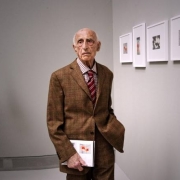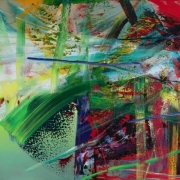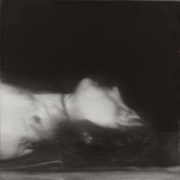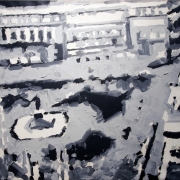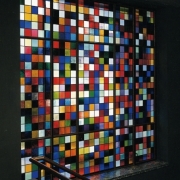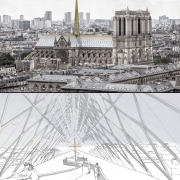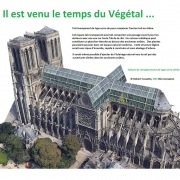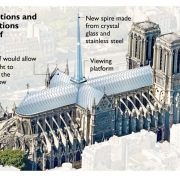The grains of sand evaporate in the whirlwind of variation and the concatenations of matter melt as if touched by the rays of the sun.
In physics the second law of thermodynamics states that everything in nature tends towards entropy, therefore chaos orders the world and outlines its shape; completely absorbed by this inescapable attraction, it is not surprising how, right now in the domain of liquid culture, a system based on the connection of different styles and the consequent rise of a contemporary art characterized by the absence of a specific identity has taken root . The accumulation intent on stratifying daily, as happens within the digital archives that are forced to store a disproportionate amount of data and information without interruption, means that the extreme heterogeneity of the materials collected cancels the specialized component of the style, transmuting it into a purely artificial hybrid with a new chimeric soul, ready to contradict the functionality and essence of a given expression. It is not just a matter of manufacturing a modern Frankenstein, but rather of creating a crossroads of resonances, of references and citations, always remaining at a certain distance from what Gillo Dorfles identified as Kitsch, “the ambiguous condition of taste”, better known like bad taste. It is always the famous art critic who speaks of the pregnant presence of the phenomenon of noise, underlining how the typical horror pleni of the contemporary originates from it. Dorfles writes: <<Today, under the label of Horror Pleni […] I mean […] the refusal […] of “too full”, of “too much noise” (not only in the sense of buzz and din, but also in the sense used by Information Theory: noise as the opposite of information and therefore confusion of every message)>>1, highlighting how confusion becomes the product of excess noise, and how this is the cause of the incomprehension of any form of expression. Being neutral in a time in which one is peremptorily invested by a bombardment of infinite visual and auditory signals is not easy at all, and many times it is impossible to ignore the continuous stimuli that come into one’s perceptual orbit, and for this reason the stance it is even more significant, while at other times it becomes neutral as a consequence of the overabundant mixing of the fragments in play. The acclaimed German artist Gerhard Richter is a belligerent example of impartiality; never fossilized into a single artistic trend, he has conducted constant experimental research for most of his life which has led him to the creation of irresistible, unique and fascinating works. It is impossible to forget the vibrant and energetic colours of the Abstract Paintings series of 1985-1989, or the cryptic ones of the consecutive Abstract Paintings 1995-1999 cycle, just as it is difficult not to be taken aback by the extreme rigor in Colour Samples, or Stripes. The variety of themes, techniques and ways of interacting with the supports are so numerous and divergent from each other, so as to always leave the doubt on the actual execution of the works by the artist, who does not seem to have a recognizable stylistic code. Certainly, the series that best reflects Richter’s desire to live the state of indifference is that of the Grey Paintings; mysterious and magnetic, the grey monochromes, despite their executive diversity, are indicative of the painter’s willingness to deny any ideology. Richter says: <<For me grey is welcome; it is the colour that best corresponds to indifference, refusal of message, absence of opinion and form. But grey – as well as the absence of form and everything else – is real only as an idea and therefore the only thing I can do is to create a colour tone that should turn out to be grey, but which is not. The painting is therefore a set of fictitious greys perceivable as a pictorial surface>>2. Illusion or truth? that of the artist is a game of mirrors, which is also reflected in the use of the photographic medium which, already from the first years of his career, proves to be essential for the purposes of artistic research, as it is capable of recording reality, and therefore of ‘investigate it in the most objective way possible. The visible is broken down, a highly layered bone structure emerges, and each level can be viewed from a different angle and perspective and be read and interpreted following multiple decodings. Therefore, for example, the October 18, 1977 series of 1988 takes on an intense allegorical-symbolic aura. Inspired by the death of the members of the cell of the terrorist band Baader Meinhof, who violently shook with his attacks after the Second World War in Germany, Richter through a hybridization between photography and painting recreates the instant following the actual death of the members of the group, creating a vivid disturbing portrait and at times almost tending to the abstraction of the event. It is interesting to note that reconstruction most of the time requires a certain imaginary quantity, without it there would be no evolution but it would stagnate in a fictitious state of historical reality; this is evident in the windows of the Gothic cathedral in Cologne which were destroyed during the Second World War and were redesigned by the artist in a contemporary key. Like pixel particles, a multitude of coloured squares follow one after the other quickly, giving rise to a surreal rain with the reflections of the rainbow that reverberates in every corner of the cathedral. The idea of Richter is truly unique: enchanted by the dematerializing phenomenon of light inside the ancient cathedrals, he diverts attention from figuration, acting as an abstracting operation that goes hand in hand with the contemporary world of today. The graft succeeds and the result is stunning. Contemporary and medieval coexist in the same spaces harmonizing perfectly and creating a hybrid full of charm and magic. The same lesson should be learned by those who will be in charge of rebuilding the lost parts of the iconic Notre Dame de Paris, queen of the Gothic cathedrals, known all over the world has become over the years the emblem of the integration between various styles and trends that they have followed one another over the centuries. Built between 1163 and 1250, sacked in 1585 restored in the 15th and 17th centuries, transformed into a Temple of Reason following the French revolution, and left in ruins and then restored again in 1842, its architecture was in modern times the emblem of the crucible of cultures until Monday 15 April 2019, the day on which it was devastated by a sudden fire, losing the medieval roof and the nineteenth-century spire. Among the new projects competing for the reconstruction commission there is the one following the eco-green trend proposed by the manager of the biotechnology company Robert Cossette who proposes to insert a greenhouse in place of the so-called “forêt” which constituted the wooden roof , and the similar one by the architect Marc Carbonare who instead suggests the construction of a roof garden instead of the ceiling, instead diverge the projects of the British Norman Foster, the architectural firm Godart + Roussel of Dijon and Alexandre Chassang who support instead a reconstruction based on the use of modern tools such as glass and steel. It is not yet clear what the fate of the cathedral will be, but one thing is sure the profoundly current teaching of Gerhard Richter, of the integration and communion between the various totally discordant styles and the abandonment of predetermined ideologies will be fundamental with a view to a successful reconstruction that contemplates the possibility of realizing something wonderful without getting lost in the arid skeleton of theories, doctrines and beliefs, therefore not following a precise idea, but if you want to pursue contemporaneity you have to wander with your mind in the infinity of options and of the possibilities, without fear of making mistakes but having the courage to dare, not to choose and to work with any material, style or idea, concretizing the ambiguity of the current time, its complexity and also its beauty. After all, sometimes the lack of style is what you need and can reserve truly unexpected surprises.
Translated into English by Gabriele Agus.
1 Gillo Dorfles, Horror Pleni. La (in)civiltà del rumore, Roma, 2008, p. 18-19.
2 Gerhard Richter, Text. Writings, Interviews and Letters 1961-2007, London, 2009, p. 92.


